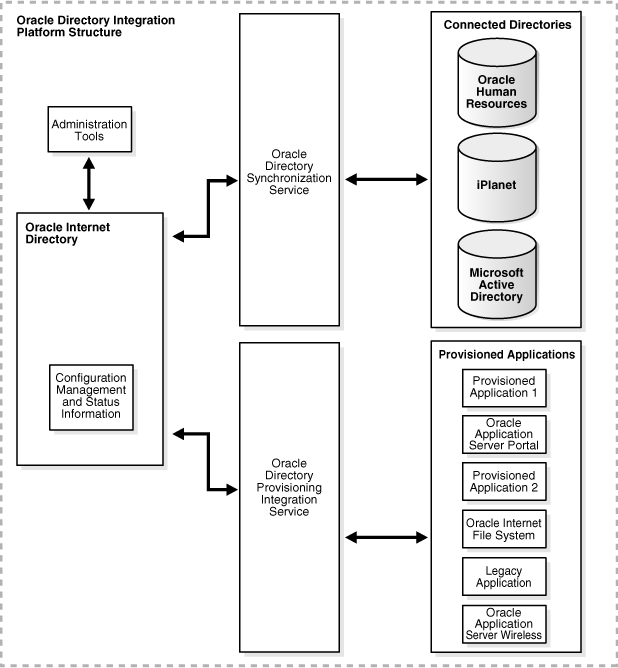|
Oracle® Identity Management Integration Guide
10g Release 2 (10.1.2) B14085-02 |
|
 Previous |
 Next |
|
Oracle® Identity Management Integration Guide
10g Release 2 (10.1.2) B14085-02 |
|
 Previous |
 Next |
Oracle Identity Management enables you to reduce administrative time and costs by integrating your applications and directories—including third-party LDAP directories—with Oracle Internet Directory. It does this by using Oracle Directory Integration and Provisioning. For example, you might need to do the following:
Keep employee records in Oracle Human Resources consistent with those in Oracle Internet Directory. Directory Integration and Provisioning provides this synchronization through the Oracle Directory Synchronization Service.
Notify certain LDAP-enabled applications—such as OracleAS Portal—whenever changes are applied to Oracle Internet Directory. The Directory Integration and Provisioning provides this notification through Oracle Provisioning Service.
Throughout the integration process, Oracle Directory Integration and Provisioning ensures that the applications and other directories receive and provide the necessary information in a reliable way.
You can integrate with various directories, including Microsoft Active Directory and SunONE Directory Server. For example, in an Oracle Application Server environment, where access to Oracle components relies on data stored in Oracle Internet Directory, you can still use Microsoft Active Directory as the central enterprise directory. Users of that directory can still access Oracle components because Directory Integration and Provisioning can synchronize the data in Microsoft Active Directory with that in Oracle Internet Directory.
Figure 1-1 shows a sample deployment of Directory Integration and Provisioning.
Figure 1-1 Example of an Oracle Directory Integration and Provisioning Environment

In the example in Figure 1-1, Oracle Internet Directory is synchronized with connected directories by way of the Oracle Directory Synchronization Service. In this example, the connected directories are Oracle Human Resources, SunONE Directory Server, and Microsoft Active Directory. Similarly, changes in Oracle Internet Directory are sent to various applications by using the Oracle Provisioning Service. In this example, the provisioned applications include OracleAS Portal, Oracle Files, Oracle Application Server Wireless, two unspecified provisioned application, and a legacy application.